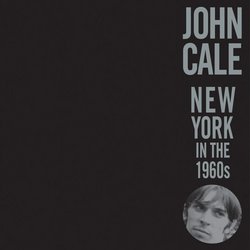Dazzling, seminal and prescient
G. HIGGINS | 06/21/2008
(5 out of 5 stars)
"There is little to add to an appraisal of this compendium that Brian Duguid hadn't already said, in his glowing 2001 Wire review of the original three separate CDs included in this (actual wooden) box set. But here goes...
Originality, as a concept, as an example, is borne out by precious few cultural artifacts. The aggressive experimentalism demonstrated by Cale and his peers is without precedent in rock and roll. It is no exaggeration to state that Cale, in these works assimilated and digested all the disparate sources of prior inspiration and influence--European symphonic tradition, serialism, Indian classical raga, American pop and blues, as well as Cageian modernism--and formulated them into stunning new realizations of what pop music could be.
No one outside of this small enclave was making sounds like this, in any genre anywhere else, and no one would until years later. Certain distant echoes surface: Alan Watts's 1962 "This Is It" from California, long called the first psychedlic record, is intriguing but not terribly similar and lacking Cale's feral drive and epic sensibility. Obviously many others were active in experimental jazz and classical forms, but shut off by choice from the world of rock and roll, and cloistered away from pop culture entirely.
These private recordings reflect an inner soundworld of such depth and richness they offer a completely new framework for hearing. One's approach to music is affected irrevocably. The notion of intense listening commences here--with Cale and the contributions of MacLise, Conrad, Jennings and others. After 45 years, the tapes of "Stainless Steel Gamelan" (a four-handed hammering/arpeggio of an electric guitar) or "Hot Scoria" (an enveloping, frenzied wash of sound) invite awe. The keyboard drones of "Sun Blindness Music" and "The Second Fortress" retain a mesmerizing quality of both the ancient past and distant future. Surely among Cale's best work.
"


 Track Listings (3) - Disc #1
Track Listings (3) - Disc #1